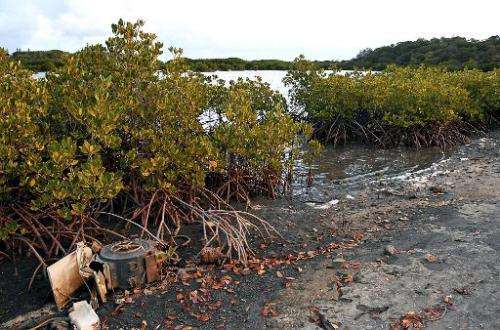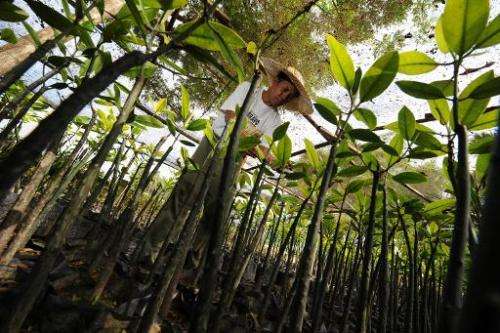Time for worldwide fund to save mangroves: UNEP

World lenders should set up a "Global Mangrove Fund" to protect these hotspots of biodiversity and vital sources of income, the UN Environment Programme (UNEP) said on Monday.
More than a quarter of the world's mangroves have already been lost, and the current rate of destruction is more than triple that of land forests, it said.
Greenhouse gas emissions have increased as a result, as methane and carbon dioxide are unlocked from vegetation and sediment, said the Nairobi-based agency. Around a fifth of carbon emissions from all forests derive from mangroves, it said.
In the first attempt to put a price tag on the cost, the report estimated economic damage at between $6 and 42 billion (7.6-53 billion euros) annually.
"Mangroves provide ecosystem services worth around $33,000-$57,000 per hectare ($13,200-22,800 per acre) per year, add to that their superior ability to store carbon that would otherwise be released into the atmosphere," said UNEP Executive Director Achim Steiner.
The report called for mangroves to join land forests in the growing panoply of international conservation incentives.
These include pledges to mitigate carbon emissions under the UN climate talks and funding projects to encourage communities to preserve and restore degraded mangroves.
One mechanism for this would be a "Global Mangrove Fund" backed by the World Bank, the Global Environment Fund (GEF), national governments and the United Nations.

"Other economic incentives that can help establish mangrove conservation and/or restoration include the provision of employment and income-generating opportunities such as sustainable fisheries and prawn cultivation, marketing of mangrove products (fish, dyes and medicines) and ecotourism and recreation," the report said.
Thick forests of trees and shrubs that thrive in warm, brackish tidal waters, mangroves are the home to many threatened species, and a direct or indirect source of revenue for tens of millions, the report said.
They also provide a shield against storms and sea surges by absorbing most of the shock of a wave before it reaches the shore.
Studies of the 2004 tsunami that struck Southeast Asia found that thousands of lives were saved where mangroves had been kept rather than destroyed to make way for seafood farms or hotels.
By 2050, Southeast Asia may have lost 35 percent of the mangrove cover it had in 2000, translating into potential economic loss of more than $2 billion a year, of which $1.7 billion would be incurred in Indonesia alone, the new report said.
© 2014 AFP





















